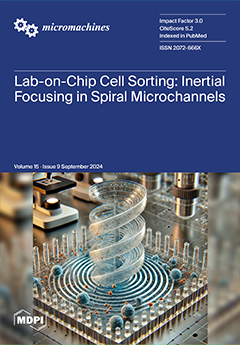The small-signal S parameters of the fabricated double-finger gate AlGaN/GaN high electron mobility transistors (HEMTs) were measured at various direct current quiescent operating points (DCQOPs). Under active bias conditions, small-signal equivalent circuit (SSEC) parameters such as
Rs and
Rd, and intrinsic parameters were extracted. Utilizing
fT and the SSEC parameters, the effective electron velocity (
) and intrinsic electron velocity (
) corresponding to each gate bias (V
GS) were obtained. Under active bias conditions, the influence mechanism of V
GS on
was systematically studied, and an expression was established that correlates
,
, and bias-dependent parasitic resistances. Through the analysis of the main scattering mechanisms in AlGaN/GaN HEMTs, it has been discovered that the impact of V
GS on
should be comprehensively analyzed from the aspects of
and parasitic resistances. On the one hand, changes in V
GS influence the intensity of polar optical phonon (POP) scattering and polarization Coulomb field (PCF) scattering, which lead to changes in
dependent on V
GS. The trend of
with changes in V
GS plays a dominant role in determining the trend of
with changes in V
GS. On the other hand, both POP scattering and PCF scattering affect
through their impact on parasitic resistance. Since there is a difference in the additional scattering potential corresponding to the additional polarization charges (
APC) between the gate-source/drain regions and the region under the gate, the mutual effects of PCF scattering on the under-gate electron system and the gate-source/drain electron system should be considered when adjusting the PCF scattering intensity through device structure optimization to improve linearity. This study contributes to a new understanding of the electron transport mechanisms in AlGaN/GaN HEMTs and provides a novel theoretical basis for improving device performance.
Full article






